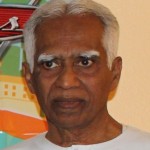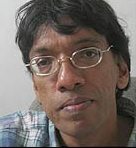–

S.Sivathasan
What a war devastated nation needs most is resource for rebuilding. What Sri Lanka lacked most was the requisite capital. When local resources cannot be fully mobilized recourse is necessary for infusion from abroad. Both strategies have been employed by the present regime. No doubt adding to debt, but permitting of first world expenditure in a third world economy. Public debt of Rs. 2.222 trillion in 2005 has risen to Rs.6.000 trillion in 2012. Year on year increase alone was Rs. 867 billion in 2012. The GDP which grew by Rs. 1.038 trillion in the same year, has the resilience to accommodate this debt.
What the people are peeved about is the uneven spread smacking even of profligacy. What the Tamils cry for is equity in distribution to make amends for past misfortunes. In desperation, they direct their sights to foreign countries and institutions for their initiative and assistance. What they can look forward to from the government is proactive response. Their experience of the Tokyo Pledge of 2003 for Sri Lanka and of Marshall Plan of 1947 for Europe is particularly comforting.
Marshall Plan
What is most striking about the Marshall Plan (MP) is the speed with which initiatives were taken for the economic reconstruction of Europe after the War. It was considered a prelude to political stability. Both placed together were seen to ensure the health of Europe and as importantly, the economic well-being and growth of the United States. The pace is a contrast to the failure of the Sri Lankan Government even four years after the end of the war. There is not even a thought of it. Launching of a redevelopment programme to get over war devastation was perhaps wished for. As culpable in this lapse are Tamils, failing to press forth the concept of a ‘Marshall Plan’ as an effort at redemption. The idea of political solution now with reconstruction to follow will be realized in the Greek kalens.
The MP was enormous in scope and vast in geographical spread. The amount US spent in three years 1948 to 1951 was$ 12.7 billion. To get the perspective clear, it may be observed that the GDP of US in 1948 was $ 258 billion. In comparison the GDP of 2012 was $ 15.65 trillion. The beneficiaries of MP in Europe were 16 states of which, UK, France, W.Germany, Italy and Netherlands received nearly three-fourths. All five are among the top in the world in state GDP as well as per capita. Timely aid was as important as the volume disbursed. Grants to all 16 countries composed 90% and the balance was loans.
Benefits of the MP did not come easily to the recipient countries. The plan may be said to have originated with Marshall’s speech at Harvard in June 1947. The US was to assist in normalizing economic health in the world. No political stability or peace was assured otherwise. This was the germ of his thinking which was elaborated on. There were however reservations, criticism and even opposition. From conception to delivery to the affected, the path was tortuous. Some had illusions of relegating Germany to a ‘pastoral state’. Statesmanship overwhelmed such ideas. Realization eventually prevailed that when Germany’s industrial capacity remained idle, Europe’s economic recovery can only get delayed. Germany’s economic recovery was deemed central to Europe’s progress. Pragmatism was more compelling than antagonism.
Other Aid
In passing, reference must be made to US grants and loans in Europe amounting to $ 14 billion outside MP. This was between 1945-1947. Britain alone received $ 3.75 billion. Post war Asia too received sizeable aid. Japan, Taiwan, South Korea and Phillipines were principal beneficiaries. In the period 1945 to 1953, grants and loans given by America to the world totaled $ 44.3 billion. This was a huge amount and it had a tremendous impact on the recovery of Europe not to mention the countries of Asia.
Inner Vitality
There is something very significant to be observed however. Six major powers fully involved in the war, both allied and axis, are now among the topmost economic power houses. Five of them barring US – Germany, Italy, Japan, UK and France – had experienced severe destruction. With a little moistening the seeds have sprouted. There was hardly a spell when they remained dormant. Their inner vitality and entrepreneurial spirit explain. Perhaps their elan vital pushed them to the top even before the war. What is noteworthy is that physical destruction did not cause despondency, but infused a new vigour. Even before the MP went into implementation, they had launched their recovery programmes with their own resources. This is not to discount the very important part that MP played in providing the initial spurt and then maintaining the momentum. Timeliness was of the essence.
Sri Lanka
Lending a helping hand to lift a prostrate people is all what the concept of ‘Marshall Plan’ is invoked here for. The parallel ceases thereafter. The five nations were able to do so since the nation building process was completed decades earlier. They moved ahead single mindedly as a single polity. The situation in Sri Lanka is distinctly different. The Tamils fought and lost. What they lost in war they cannot gain in peace. If what they want is equality, it is only inequality that we will give. This is the official attitude of the government. Reducing the North East to a ‘pastoral state’ will take the country nowhere.
“Come and see” is the oft thrown challenge. Having seen two there is no appetite for more. The no. of industries in the country is 4,816 in 2012. In the Northern Province-NP- it is 11. The no. grew by 470 in the last 4 years island wide. In the NP it grew by 6. The GDP of the Province is 3.68% of the nation’s. What is seen is enough.
The initiative of the donor community is necessary for a wholesome change. A country cannot prosper when a segment is impoverished. Russia spurned US aid and mulcted East Germany almost to the tune of MP aid. Unified Germany’s mission was to bring East and West to a level of parity. Same ethnicity one would say. If for the benefit of reconciliation and unity ethnicity blindness is called for, embracing it may be compulsive to all.
Tokyo Pledge
The Tokyo Pledge of 2003 drawn up with a magnitude of $ 4.5 billion is a little bit of a Marshall Plan. With a tenth implemented and nine-tenth remaining, it is a viable entry point to resume the redevelopment programme. The Needs Assessment Report of 3,400 pages encompassing the North East and the adjoining Provinces is appropriate for an immediate beginning. The Report has identified projects. As funding becomes available, they are picked up, detailed estimates are worked out and projects are implemented. Even as this segment gets under implementation, a Needs Assessment survey can be carried out for the subsequent period up to 2009. Mid – course revisions are practicable.
Future
A future of promise should firstly enable those in governance to see the sentiments of all citizens in objective light. Those thrown aside have to be facilitated to come back to mainstream economic life. Local and foreign resources have to be mobilized and utilized for this purpose.











